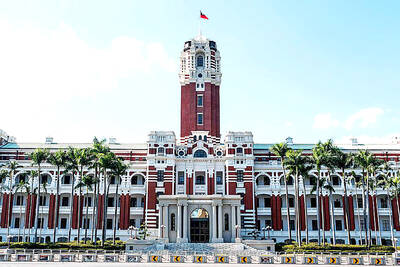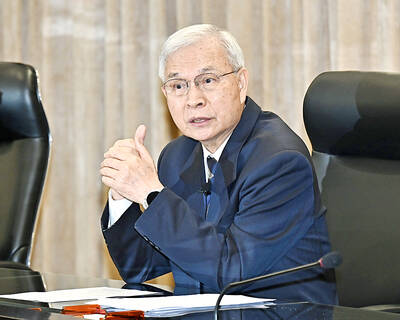As the global recession hits Japan’s export-driven economy, temporary workers at plants producing auto parts and electronics have been among the first to lose their jobs, with the 320,000 Brazilians living in Japan particularly vulnerable to the layoffs.
More than 800 Brazilians and their supporters took to the streets of the central Japanese city of Nagoya on Sunday, raising their green and yellow national flags and calling for secure employment, proper schooling for their children and an end to layoffs.
Paulo Kanashiro and Minoru Nishizawa, both Brazilians who have Japanese ancestry, brought their Brazilian coworkers from a Toyota subsidiary to the demonstration to demand from the Japanese government the same rights granted to Japanese workers.
“We are also paying taxes here,” 33-year-old Nishizawa of Sao Paulo said. “Why are we not eligible for the same rights?”
In December, nearly 500 Japanese temporary workers who lost their jobs because of production cuts flocked to a Tokyo park to receive free lodging and food. About 300 of them were able to receive government subsidies and temporary lodging before they began their search for a new job.
But the situation is different for Brazilians.
Often called dekasegi, or migrant workers, they are considered only temporary residents who will eventually return to their homelands.
Brazilians and other South American nationals began migrating to Japan in large numbers in search of higher paid work in 1990 when the immigration law was revised. Since then, they have dominated the manufacturing workforce.
Some still plan to return to Brazil, but for many other Brazilians, Japan has become home. Kanashiro and Nishizawa, who have lived and worked in Japan for 16 years, can’t imagine leaving Japan just because they are jobless.
Kanashiro moved to Hekinan in Aichi Prefecture from Campo Grande in Brazil with several members of his family.
“Even if we had a choice of returning to Brazil, we’d have to start from scratch there,” the 29-year-old Kanashiro said.
Workers at the Hekinan factory of a Toyota subsidiary suffered an almost 70 percent cut in their pay, Nishizawa said.
Brazilians there have worked overtime and on weekends and during holidays when their Japanese colleagues wanted off, he said.
The Brazilian migrant workers said they “contributed to the prosperity of the Japanese economy and society for more than 20 years” and to building a strong foundation for Japan’s manufacturing industry.
But the government does not see Brazilian migrant workers as deserving certain rights, Nishizawa said.
“We are treated like tissues in that we are destined to be thrown away when our job is done,” he said.

The CIA has a message for Chinese government officials worried about their place in Chinese President Xi Jinping’s (習近平) government: Come work with us. The agency released two Mandarin-language videos on social media on Thursday inviting disgruntled officials to contact the CIA. The recruitment videos posted on YouTube and X racked up more than 5 million views combined in their first day. The outreach comes as CIA Director John Ratcliffe has vowed to boost the agency’s use of intelligence from human sources and its focus on China, which has recently targeted US officials with its own espionage operations. The videos are “aimed at

STEADFAST FRIEND: The bills encourage increased Taiwan-US engagement and address China’s distortion of UN Resolution 2758 to isolate Taiwan internationally The Presidential Office yesterday thanked the US House of Representatives for unanimously passing two Taiwan-related bills highlighting its solid support for Taiwan’s democracy and global participation, and for deepening bilateral relations. One of the bills, the Taiwan Assurance Implementation Act, requires the US Department of State to periodically review its guidelines for engagement with Taiwan, and report to the US Congress on the guidelines and plans to lift self-imposed limitations on US-Taiwan engagement. The other bill is the Taiwan International Solidarity Act, which clarifies that UN Resolution 2758 does not address the issue of the representation of Taiwan or its people in

US Indo-Pacific Commander Admiral Samuel Paparo on Friday expressed concern over the rate at which China is diversifying its military exercises, the Financial Times (FT) reported on Saturday. “The rates of change on the depth and breadth of their exercises is the one non-linear effect that I’ve seen in the last year that wakes me up at night or keeps me up at night,” Paparo was quoted by FT as saying while attending the annual Sedona Forum at the McCain Institute in Arizona. Paparo also expressed concern over the speed with which China was expanding its military. While the US

SHIFT: Taiwan’s better-than-expected first-quarter GDP and signs of weakness in the US have driven global capital back to emerging markets, the central bank head said The central bank yesterday blamed market speculation for the steep rise in the local currency, and urged exporters and financial institutions to stay calm and stop panic sell-offs to avoid hurting their own profitability. The nation’s top monetary policymaker said that it would step in, if necessary, to maintain order and stability in the foreign exchange market. The remarks came as the NT dollar yesterday closed up NT$0.919 to NT$30.145 against the US dollar in Taipei trading, after rising as high as NT$29.59 in intraday trading. The local currency has surged 5.85 percent against the greenback over the past two sessions, central